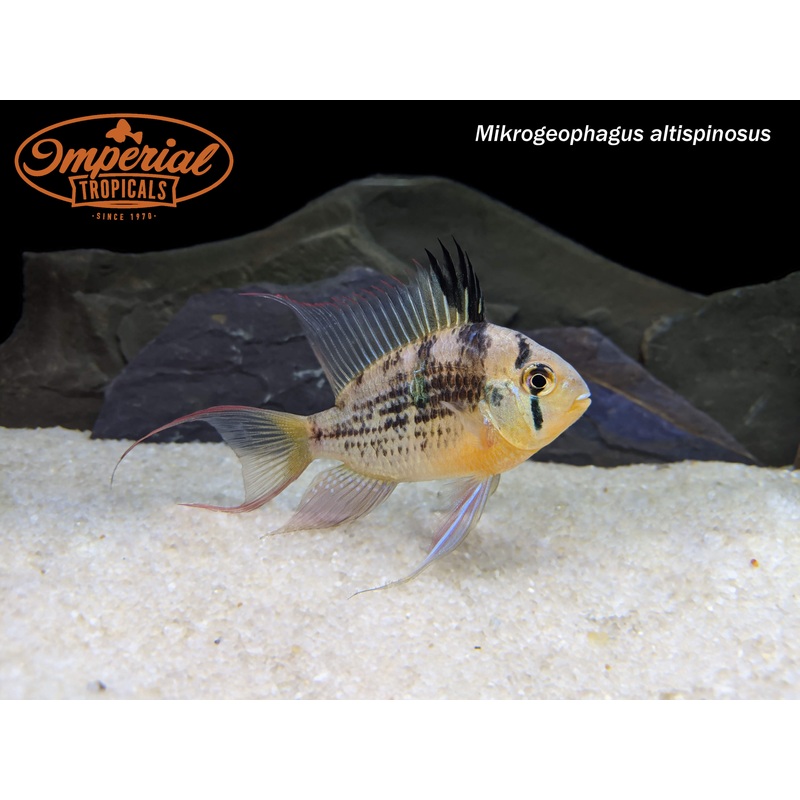Remarks: Rams have been popular in the hobby for decades for their brilliant colors and easy reproduction. Other ram species rarely grow larger than 2.5,” but the Bolivian ram is the exception, sometimes growing as large as 4″. What also has them differ from other rams is that this species doesn’t require as high of a temperature. Their common name reflects where this species originates, occurring in the upper Rio Madeira basin both in Bolivia and Brazil. Their genus, Mikrogeophagus, which means “Small Eartheater,” gives clues about their feeding mechanism: They sift sand through their mouths and gills, swallowing small bits of food. As such, sand is necessary for the long-term health of these fish.
Reproduction is achieved when a pair decides upon a suitable cave or flat surface. They may excavate small craters in the sand to use as a spawning site – something that is very enjoyable to witness! Eggs are laid and guarded by the parents until they are free-swimming, at which time the parents will parade the fry around the tank, eating small bits of food stuck to tank decor. Dither fish such as small tetras will give the parents something to target with their aggression, hopefully saving themselves from each other.






Reviews
There are no reviews yet.